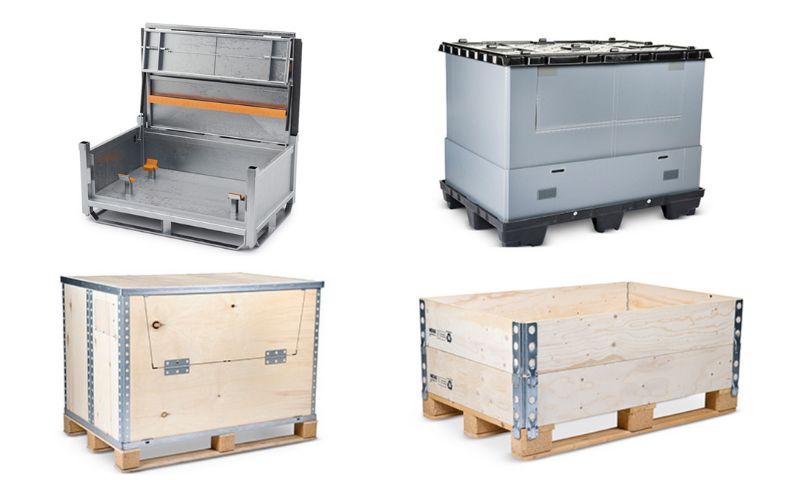- News & Insights
- 2022
- Three key trends shaping the supply chain future in 2023
- Sustainability
- Innovation
News & Insights
SUPPLY CHAIN
THREE KEY TRENDS SHAPING THE SUPPLY CHAIN FUTURE IN 2023
Looking back on the chaotic two years after the COVID-19 outbreak, the global supply chains are far from operating as usual.
Before 2020, cost reduction and productivity enhancement were the main drivers of supply chain process improvements, digitization, and investment. The new trends that emerged in the current market situation push all market players to rethink their business strategies.
Given the importance of supply chains, it is no surprise that future trends will revolve around the improvement of the industry itself. The growing influence of connectivity, circularity, and customization is expected to make the supply chain faster and less susceptible to disruptions. Continue reading to learn about the three key factors that will most likely determine the future of supply chains.
Circularity
With the growing push for sustainable solutions and reduction of CO2 emissions, the market is looking for innovative logistic solutions that are both economically and environmentally friendly. One way to decrease the ecological footprint would be to reduce the resources used for producing the final products and subsequently generate less waste. From eco-friendly warehouses using advanced energy management systems to electric and solar-powered fleets gaining popularity, the industry leaders are investing in “green” solutions to conserve resources. With green consumerism on the rise, more businesses are expected to implement eco-friendly supply chain processes in the coming years1.
However, a new approach to circularity is to reuse its ostensible waste materials, as well as its returns. This can be accomplished by either converting them into new products that can be sold once more, or by reusing parts of the waste as many times as their quality allows until they can be recycled2. A good example are returnable packaging systems, a cost-effective and environmentally friendly alternative for customers with an extensive flow of goods and a limited number of distribution points. The investment pays off quickly if one uses them at least for four cycles per year. Keeping in mind the rising costs of transportation and the shift to regionalization of global supply chains, this solution has the potential to significantly cut down transportation costs.
 From steel boxes for maximum product protection to plywood packaging for bulky and heavy goods and plastic pallets for extended durability, returnable systems offer customized benefits for any product.
From steel boxes for maximum product protection to plywood packaging for bulky and heavy goods and plastic pallets for extended durability, returnable systems offer customized benefits for any product.
Connectivity
The push for digital transition of modern supply chains will be even greater in 2023, as connectivity can help logistic companies cut down their supply chain costs significantly. By introducing tools and systems allowing to track and trace the conditions of their logistic chains in real-time, businesses can quickly increase the visibility of the inefficiencies in their flows and improve product handling. In fact, many companies are already taking action and investing millions of dollars in upgrading their digital capabilities, to answer the need for real-time visibility and better demand planning3.
How does it work in practice? Once the returned item is properly examined, categorized, and labeled, the return process can be automated and optimized using connected warehouse or transportation management software. This speeds the process of collecting unsold items from pick-up points as well as regrouping and sending them to their new destination in real time. What’s more, connectivity helps identify supply chain weaknesses and anticipate potential risks. It also has the potential to improve the quality of pooling services, by enabling companies to monitor the whole process and collect data. Besides obvious environmental benefits, pooling systems reduce transportation costs as well as provide complete visibility throughout the supply chain flows.
 By using a mix of technologies, Nefab’s track and trace platform provides, for example, real-time location in transit. This data can increase efficiencies as well as reduce costs of your connected flows, sometimes even up to 65% cycle time.
By using a mix of technologies, Nefab’s track and trace platform provides, for example, real-time location in transit. This data can increase efficiencies as well as reduce costs of your connected flows, sometimes even up to 65% cycle time.
Customization
Companies that do not want to wait for supply lines to untangle themselves are finding new ways to bypass the problem. For example, retailers short on storage space are buying warehouses, shippers that cannot find containers are making their own, and companies unable to book with ocean carriers are chartering vessels, while those unhappy with their online sales are buying e-commerce fulfillment operators4. The raising costs of traditional truck delivery, for instance, pushed many shipping giants into air freight. On the other hand, many automotive producers started forming strategic agreements with chipmakers to produce their own chips and this way overcome the global shortage of semiconductors5.
The growing need to customize supply chains will push logistic companies to offer more complex solutions, that will handle more than shipping the product from point A to B. Those willing to go the extra mile to meet the customers’ expectations and offer added value, will dominate the market. Therefore, logistics solutions providers should reevaluate their offers and think about how they can help the producers optimize the costs, while offering reliable and timely service both regionally and globally.
Challenging road ahead
Some say that the COVID-19 pandemic has not necessarily created new challenges for supply chains, but rather only accelerated and magnified problems that had already existed in the industry for decades6. Needless to say, the industry needs to modernize to better answer tomorrow’s challenges. With connectivity, circularity and customization being the top demands in the near future, businesses of all shapes and sizes will be able to effectively prepare their supply chains for the unknown.
Looking for a trusted packaging and logistics partner in 2023? We save resources in supply chains, for a better tomorrow.
Want to learn more?
GET IN TOUCH
Contact us to learn more about our sustainable solutions driving supply chains forward.
LEARN MORE
GreenCALC
Nefab’s own certified calculator measures and quantifies financial and environmental savings in our solutions
Sustainable Solutions
Engineered packaging for sustainable supply chains
Sustainable Materials
Fiber-based packaging and raw materials

